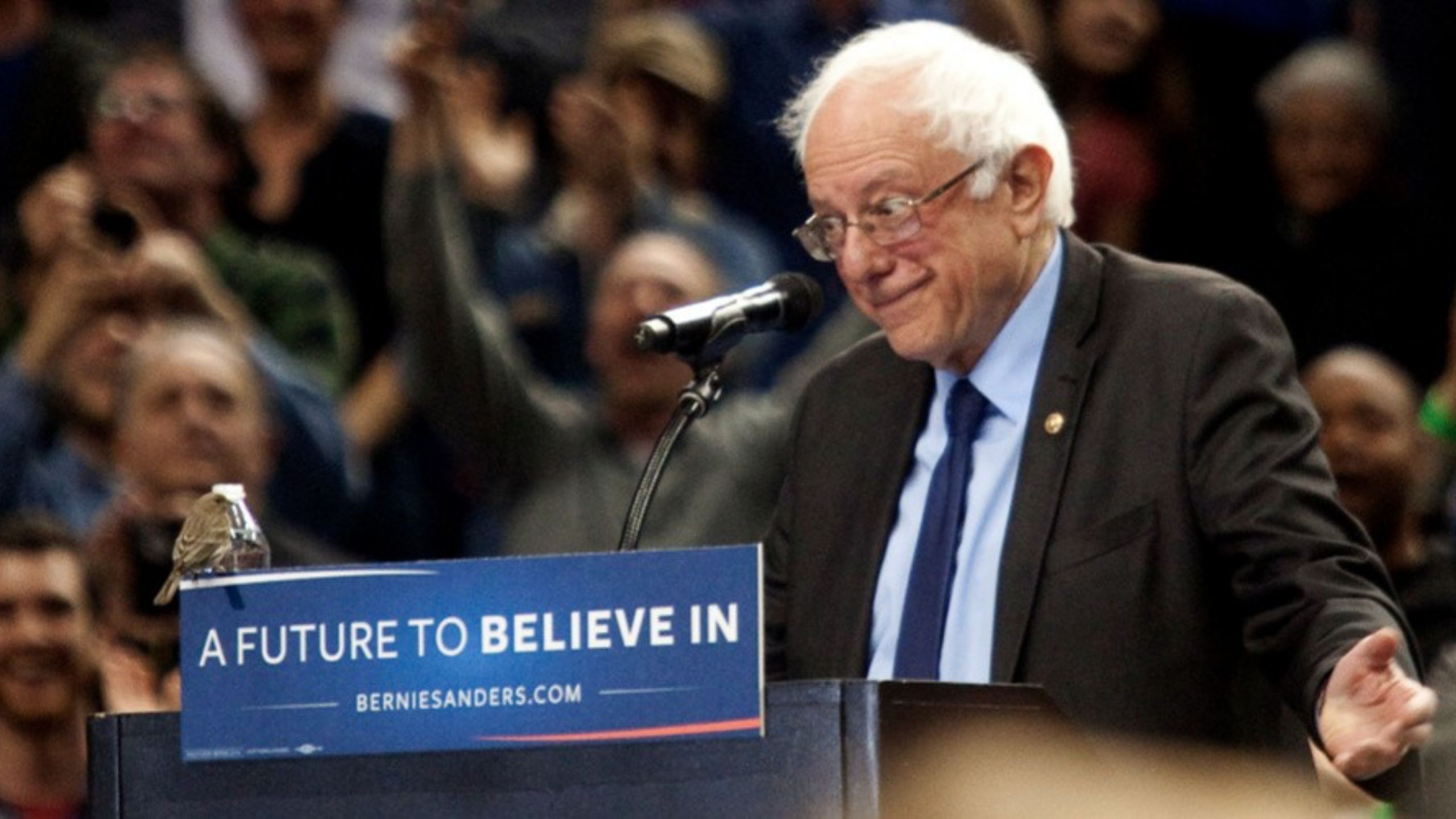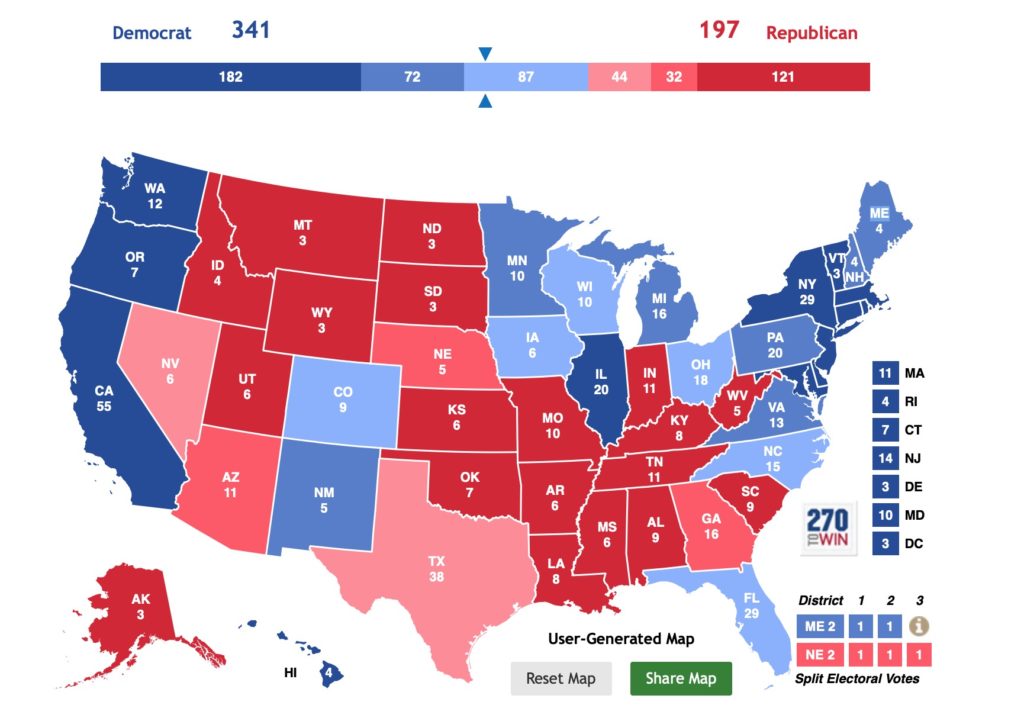
You don’t often see Bernie Sanders and pragmatic in the same sentence. In 2016, his policy proposals were called “pie-in-the-sky.” However, a lot has changed over the past three years.
The platform once considered radical is now being embraced by Democrats across the country, including some of his competitors in 2020. The House of Representatives just passed a $15 minimum wage bill. S.1129, Bernie’s Medicare For All bill, has fourteen cosponsors. Many Presidential candidates are rejecting big money in the Democratic primary, just as Sanders did in 2016.
The Overton window has been pushed well to the left, due in large part to Bernie Sanders. The time now seems right for Sanders to complete the political revolution he started in 2015.
In this article, I’ll explain why Bernie Sanders is the pragmatic choice in 2020. My argument can be broken down into three parts:
- His policies are popular.
- He’s popular.
- He polls well against Donald Trump.
His Policies Are Popular
Bernie Sanders has added a new section to his stump speech. He talks about how all the “radical” ideas he promoted as part of his 2016 campaign are now becoming mainstream.
For example, take Medicare For All. Many polls now show that a majority of Democrats support a Medicare For All, single-payer system. Here are a some data points:
- April 13, 2019: 51% of Americans support single-payer
- October 22, 2018: 70% of Americans support Medicare For All
- April 2019: 56% of Americans favor a national healthcare plan
- July 2, 2019: 55% of Americans support Medicare For All if they get to keep their doctor and hospital
The data points are pretty clear. A majority of Americans, especially Democrats and left-leaning independents, support Medicare For All.
Next, let’s focus on the Green New Deal. First, it’s important to point out that many components of the Green New Deal were part of Sanders’s 2016 platform.
A December 2018 poll showed that 92% of Democrats and 64% of Republicans support the Green New Deal. A February 2019 poll found that a majority of likely 2020 voters support major components of the Green New Deal, including the green jobs guarantee and the proposal to improve the nation’s water infrastructure. A 2019 Marist Poll found that 63% of Americans support a Green New Deal.
One April poll found that a slight plurality of voters (43% support; 46% oppose) don’t support the Green New Deal. However, this poll was promptly criticized for its misrepresentation of the Green New Deal.
Regardless, there’s clear popular support for a green energy initiative, something that Sanders has been a consistent champion of. In 2015, Burlington became the first city to run entirely on renewable energy, an effort that was aided in part by the work of the city’s former Mayor — Bernie Sanders.
The list goes on:
- More than 60% of Americans support marijuana legalization, per Pew Research, Gallup, and Marist
- A majority of Americans (and more than 80% of Democrats) support making public colleges and universities tuition free, per Marist, PSB Research, and Morning Consult
- A majority of Americans support a $15 minimum wage, per Marist and Hill-HarrisX
Marist’s July 2019 poll also shows majority support for background checks for private gun sales and sales at gun shows, government regulation of prescription drug costs, a wealth tax, an assault weapons ban, and a carbon tax.
The Bernie Sanders platform isn’t radical — it’s popular.
He Is Popular
Most of the analysis following the June 2019 Presidential debate focused on national or state-by-state polling. The trend was clear: Joe Biden lost ground, Kamala Harris surged, Elizabeth Warren continued to gain support slowly, while Bernie Sanders remained mostly even.
One under-examined trend following the first debate was that Bernie Sanders passed Joe Biden as the candidate with the highest favorability rating.
Immediately following the debate, 538’s tracking poll found that Bernie Sanders saw a 1.1% increase in favorability, leaving him 75.4% favorable compared to 17.6% unfavorable. On the other hand, Joe Biden’s favorability dropped 76.5% to 74.4%. His unfavorables increased from 161.% to 19.6%.
This isn’t the only poll showing this trend. A recent Gallup poll found that Bernie Sanders has the highest favorability among Democrats and left-leaning independents.
Morning Consult, which surveys 5,000 voters on a weekly basis, found that Bernie Sanders passed Joe Biden in favorability following the debates, though Biden took back a narrow lead in their most recent survey (note: Morning Consult conducts weekly tracking polls, so expect their positions to slightly fluctuate).
Morning Consult also conducts monthly polls tracking the favorability of Senators among their state’s constituents. The Senator with the second highest approval rating is — you guessed it — Bernie Sanders. Angus King of Maine had the highest approval ratings of any Senator.
It’s perhaps important to also point out that Elizabeth Warren, who is also running for the Democratic nomination, ranks as the fourth most unpopular Senator, though her net approval rating is still +8.
Bernie Sanders is incredibly popular and there’s no denying it.
He’s Popular, So What?
The popularity of Bernie Sanders has led to following results:
- 1,000,000 volunteers nationally, including 25,000 in Iowa.
- More donors than any other candidate
- $30 million cash on hand, more than any other Democrat
- The most social media support of any Democratic primary candidate
Sanders’s national popularity has helped him build the largest grassroots army of any Democratic primary candidate.
He Polls Well Against Donald Trump
Let me preface this section by stating that general election polls this early in the election cycle aren’t always predictive. However, Bernie Sanders has consistently led Donald Trump nationally and in battleground states for the better part of four years.
From February 2016 to June 2016, Bernie Sanders beat Donald Trump head-to-head in every national poll except one. On aggregate, Sanders led Trump nationally by more than ten points.
Since 2018, Bernie Sanders has led Donald Trump nationally in every poll except for one, which was conducted by the notoriously right-leaning Rasmussen. On aggregate, Bernie Sanders leads Trump by 4.8 points (the one Rasmussen poll brings down Sanders’s aggregate lead by more than one full percentage point).
However, Sanders’s edge becomes clearly when you look at the state-by-state polling. Below, you’ll see what the Electoral College map would look like based on current polling.
For reference:
- Red states are for Trump
- Blue states are for Sanders
- Light blue/red means that the candidate’s lead is within the margin of error
- Medium blue/red means that the candidate’s lead is beyond the margin of error, but less than ten points
- Dark blue/red means that the candidate’s lead is beyond ten points
- I also used historical trends, 2016 polling, and results from the 2016 Presidential election when creating this map

As you can see, not only could Bernie Sanders defeat Donald Trump, it could be a landslide. For the record, I don’t think Sanders is positioned to win Florida. It has the oldest population of any state, and Sanders is currently struggling to win over older voters.
However, if we subtract those 29 electoral votes, as well as the 15 from North Carolina (a state Trump won in 2016), Sanders still finishes with 297 electoral votes.
On the flip side, I would expect Sanders to win Nevada. The state is getting bluer and has a large Latinx population, a demographic that views Sanders very favorably.
In my view, the path of least resistance in 2020 is flipping the roughly ~80,000 votes in Wisconsin, Pennsylvania, and Michigan while holding onto the states that Clinton won in 2016. That’s all it would take to defeat Donald Trump.
Not taken into account in this map is the set of internal polls the Sanders campaign released showing him ahead of Donald Trump in Wisconsin (+10), Michigan (+11), and Pennsylvania (+8).
The Bottom Line
Bernie Sanders is popular, his ideas are popular, he polls well against Donald Trump in the states that matter most, and he has the most grassroots support of any Democratic candidate.
For these reasons, he is the pragmatic choice in the crowded 2020 Democratic primary field.
What do you think? Who are you voting for in 2020? Leave a comment below!
Bernie/Tulsi 2020
I’m all in for Bernie. If the DNC tries to push him out like last time, I WILL still vote for Bernie.